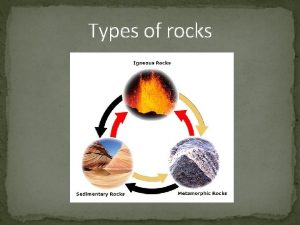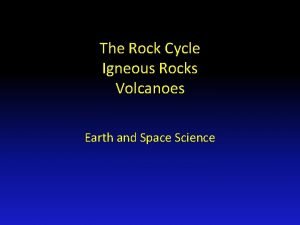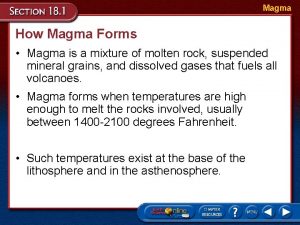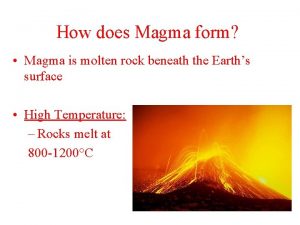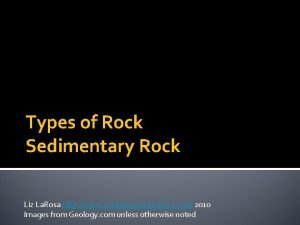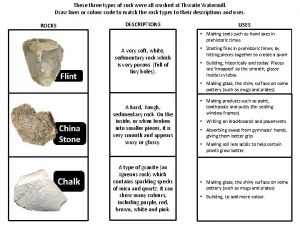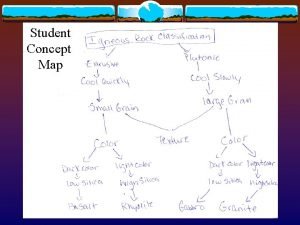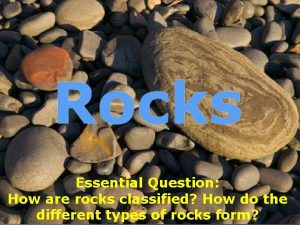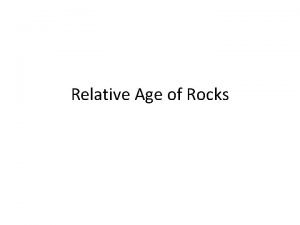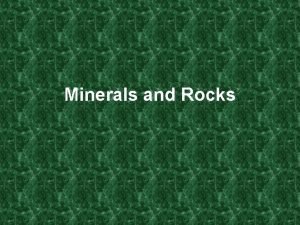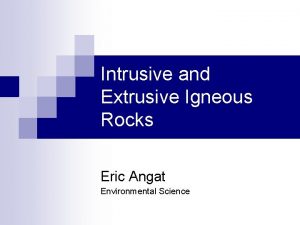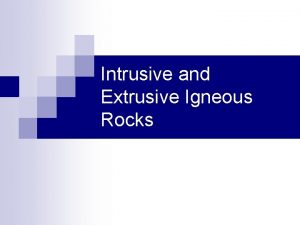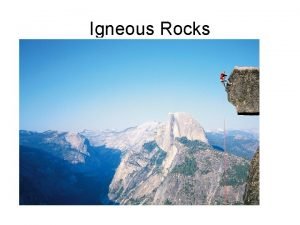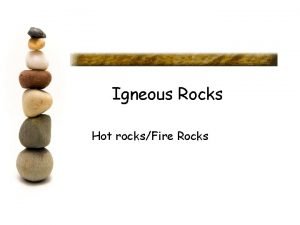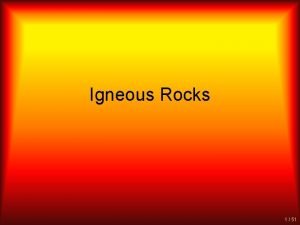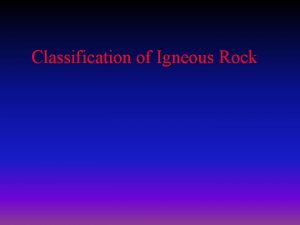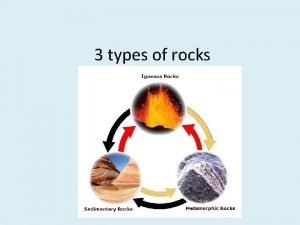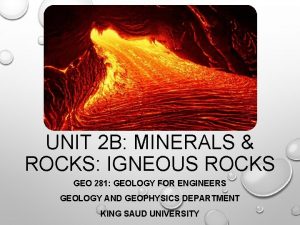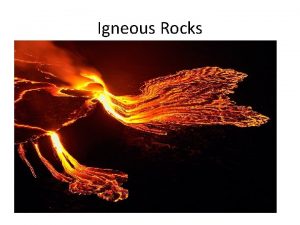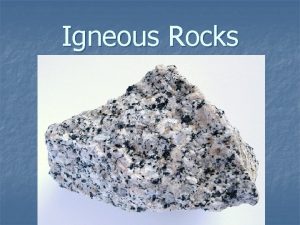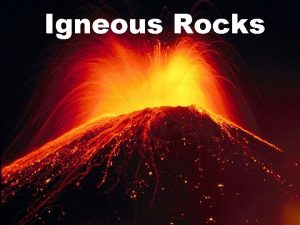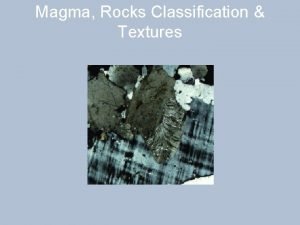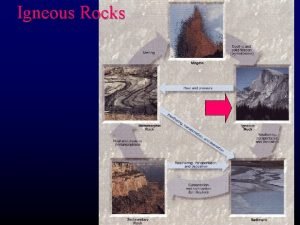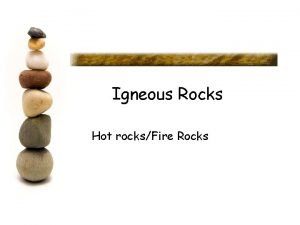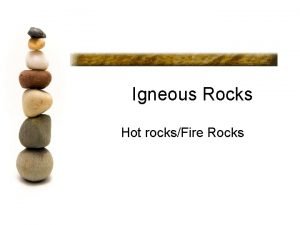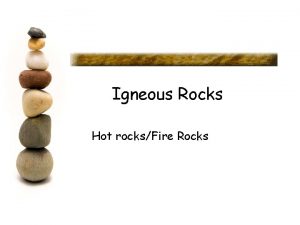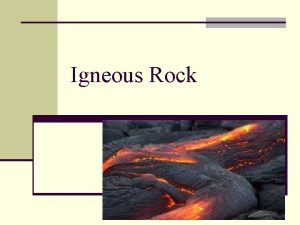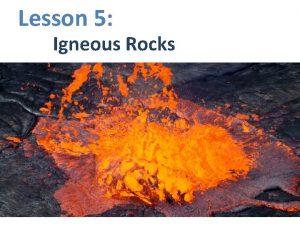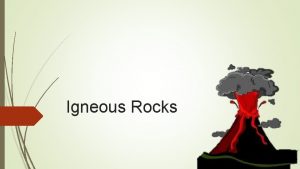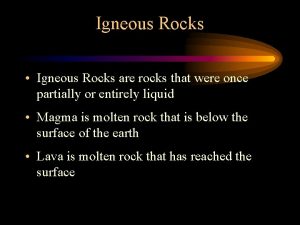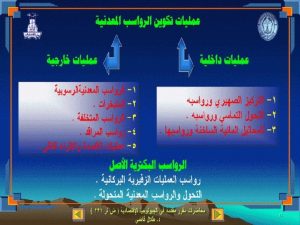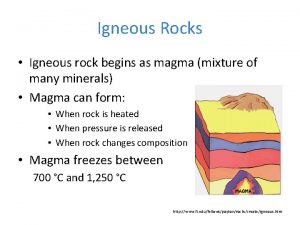Igneous Rocks Igneous Rocks Form when magma or

























- Slides: 25

Igneous Rocks

Igneous Rocks: Form when magma or lava cool and harden. The faster they cool, the smaller the crystals. Magma - molten rock that forms deep beneath Earth’s surface. Lava - magma that reaches the surface.



Types of Igneous Rocks Extrusive – formed above ground (lava) Small grain Basalt most common, often found on ocean floor Intrusive - formed under ground (magma) Large grain Granite most common

Extrusive Rocks (Above Ground – Lava)


Intrusive Rocks

Intrusion

How Rocks Melt Partial Melting – Because different minerals have different melting points, not all parts of a rock melt at the same time. – Partial melting is the process whereby some minerals melt at low temperatures while other minerals remain solid.

How Rocks Melt Fractional Crystallization – When magma cools, it crystallizes in the reverse order of partial melting—the first minerals to crystallize from magma are the last minerals to melt during partial melting. – Fractional crystallization is the process whereby different minerals form at different temperatures.

Bowen’s Reaction Series

Classification of Igneous Rocks 1. Texture 2. Composition

Texture 1. Coarse grained 2. Fine grained 3. Glassy texture 4. Porphyritic texture

pegmatite porphyrite phaneritic glassy aphanitic vesicular

Composition Felsic: Light colored and High in silica (Si. O 2) Mafic: Dark Colors and Low in silica, High in iron and magnesium Ultramafic: Greenish or dark Colors, Highest levels of iron and magnesium. Intermediate : Intermediate colors (like gray)



Felsic light colored minerals Granite Diorite Basalt Mafic Dark colored minerals Peridotite

Rhyolite? Intrusive or Extrusive? Extrusive Composition? Felsic

Gabbro? Intrusive or Extrusive? Intrusive Composition? Mafic

Diorite? Intrusive or Extrusive? Intrusive Composition? Intermediate

Andesite? Intrusive or Extrusive? Extrusive Composition? Intermediate

Felsic Pegmatite Granite Rhyolite Obsidian Diorite Gabbro Mafic Peridotite Intrusive Andesite Basaltic Glass Extrusive

Igneous Rocks Summary • Intrusion – a body of magma underground • Porphyry – an Igneous Rock that has undergone different rates of cooling • Rocks containing silica are light. • The higher the amount of silica in the rock the less dense they are • Lighter stuff floats to the top • When material is held underground it is called Intrusive • Stuff that flows out into the air is called Extrusive • The rate of cooling determines the size of the crystals • Rocks formed underground tend to have large crystals because they cooled slowly. • Rocks formed above ground tend to have small crystals because they cooled fast. • A rock that cooled slowly for a while and then was cooled rapidly? Porphyry • use different rocks around to show the difference in grain size • have them predict where you might find each rock in a volcano
 Rock cycle song (sedimentary igneous metamorphic)
Rock cycle song (sedimentary igneous metamorphic) Igneous metamorphic and sedimentary
Igneous metamorphic and sedimentary What type of rock is this
What type of rock is this Hardened magma squeezed into vertical spaces between rocks
Hardened magma squeezed into vertical spaces between rocks Magma form
Magma form Magma type
Magma type Concept map for igneous rocks
Concept map for igneous rocks Topography associated with igneous rocks
Topography associated with igneous rocks Three types of igneous rocks
Three types of igneous rocks Sedimentary concept map
Sedimentary concept map Non banded rocks
Non banded rocks Concept map magma
Concept map magma Marli miller
Marli miller Luster and streak
Luster and streak Intrusive or extrusive
Intrusive or extrusive Pumice extrusive or intrusive
Pumice extrusive or intrusive Intrusive vs extrusive igneous rocks
Intrusive vs extrusive igneous rocks Igneous rock
Igneous rock Pumice crystal size
Pumice crystal size Extrusive rock
Extrusive rock Ultrabasic rocks
Ultrabasic rocks Elements look like
Elements look like Concept map for igneous rocks
Concept map for igneous rocks Gabbro classification
Gabbro classification Rocks formation
Rocks formation Igneous rock texture
Igneous rock texture


